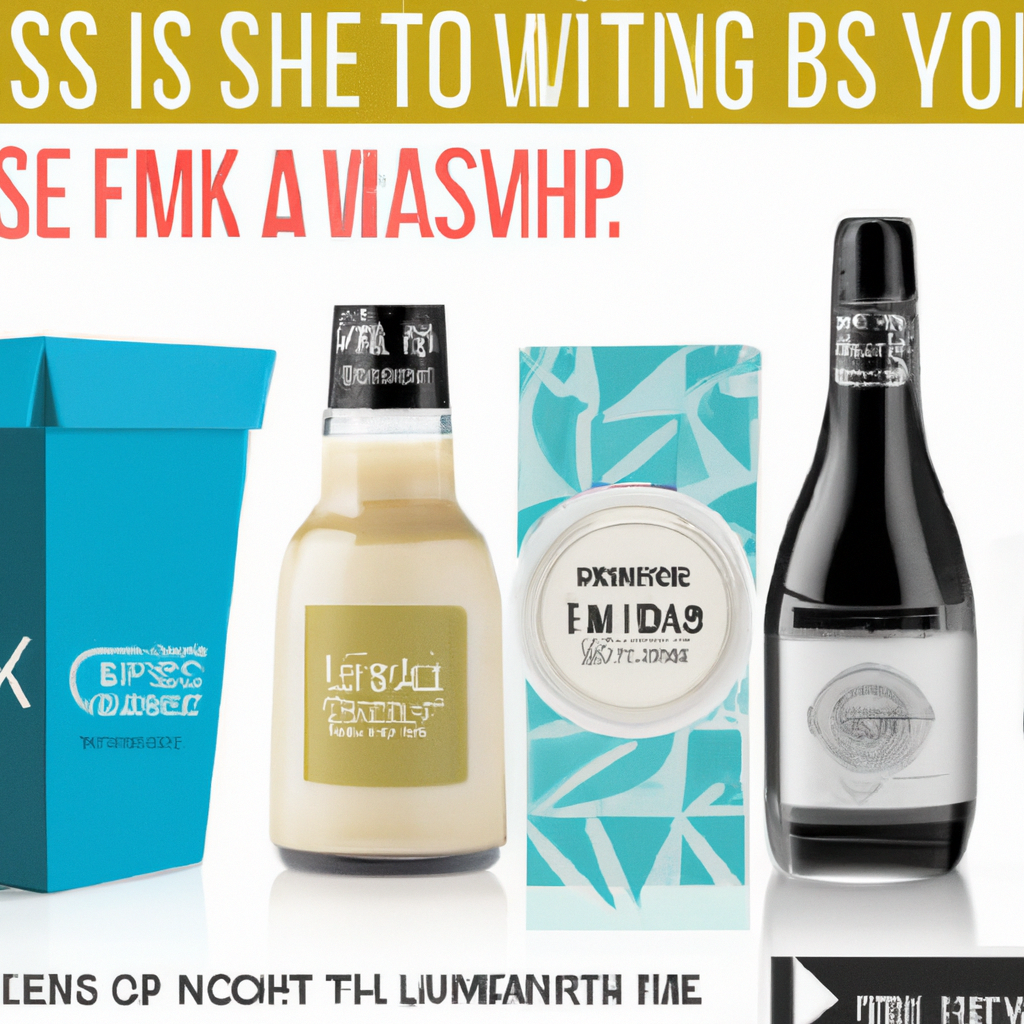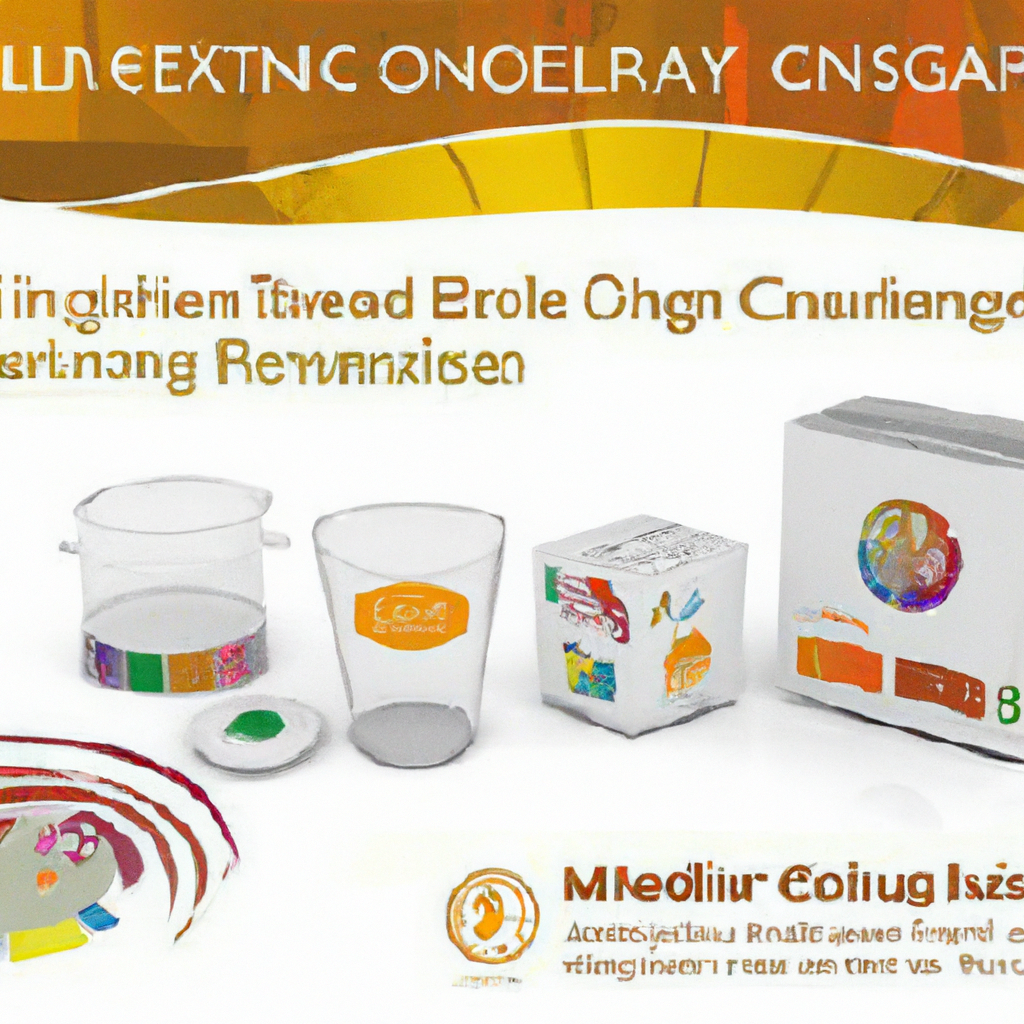You’re about to discover 3 simple steps that will help you design product packaging that is not only eye-catching but also irresistible to your customers. In this article, we will explore the importance of visual appeal, the power of storytelling, and the significance of functionality when it comes to creating packaging that truly stands out on the shelves. Get ready to enhance your brand image and boost your sales with these practical tips for designing appealing product packaging.

Step 1: Understanding Your Target Audience
Identify your target market
Before designing appealing product packaging, it is crucial to identify your target market. Understanding your target audience will not only help you tailor your design to their preferences but also ensure that it effectively communicates your brand message. Consider factors such as demographics, preferences, and buying behaviors to narrow down your target market.
Conduct market research
Once you have identified your target market, conducting market research is essential. This step involves gathering information about your industry, competitors, and consumer trends. By analyzing market data, you can gain insights into what packaging designs are successful in your industry and identify potential gaps or opportunities.
Analyze consumer preferences
Understanding consumer preferences is vital for designing appealing product packaging. Conduct surveys, interviews, or focus groups to gather information about what drives purchasing decisions for your target audience. Consider factors such as color preferences, packaging materials, and packaging styles that resonate well with your target customers.
Study competitor packaging
Analyzing your competitors’ packaging is an important step in creating appealing designs. By studying what your competitors are doing, you can identify their strengths and weaknesses in packaging design. This will help you differentiate your product from the competition and create packaging that stands out on the shelves.
Develop buyer personas
Creating buyer personas can provide valuable insights into the mindset of your target audience. Buyer personas are profiles that represent fictional individuals who represent your target customers. These personas take into account demographics, interests, and motivations. By developing buyer personas, you can tailor your packaging design to resonate with specific customer segments.
Step 2: Creating Eye-Catching Graphics and Typography
Choose an appropriate color scheme
Selecting an appropriate color scheme is crucial for creating eye-catching packaging. Colors evoke emotions and can influence purchase decisions. Consider the psychology of colors and choose a color palette that aligns with your brand personality and resonates with your target audience.
Design a compelling logo
A compelling logo is a key element of memorable packaging. Your logo should be visually appealing, reflect your brand identity, and be easily recognizable. Consider working with a professional designer to create a logo that represents your brand and can be seamlessly integrated into your packaging design.
Create visually appealing illustrations
Visual illustrations can bring life to your product packaging. Whether it’s through product images, graphics, or icons, incorporating visually appealing illustrations can catch the attention of consumers and communicate key messages effectively. Ensure that the illustrations align with your brand identity and complement the overall packaging design.
Select an appropriate font
Choosing the right font is crucial for readability and conveying your brand message. Consider using a legible font that reflects your brand’s tone and personality. Ensure that the font is easily readable at various sizes and consider the hierarchy of fonts to emphasize important information.
Ensure readability
Readability is key when it comes to product packaging design. Avoid using fonts that are too small or difficult to read. Make sure that the text is clear and easily understandable, especially for essential product information such as ingredients or instructions. Consider using appropriate line spacing and font sizes to enhance readability.
Utilize hierarchy in typography
Utilizing typography hierarchy is essential for guiding consumers’ eyes through your packaging design. By using different font sizes, weights, and styles, you can create a visual hierarchy that highlights essential information and guides consumers in understanding the product. Ensure that the hierarchy is consistent and aligned with your brand identity.
Step 3: Incorporating Effective Structural Design
Consider product dimensions and shape
When designing product packaging, it is essential to consider the dimensions and shape of the product. The packaging should fit the product securely to protect it during transportation and storage. In addition, consider the shape of the packaging itself in relation to the product and brand identity. Unique and well-fitted packaging can create a memorable unboxing experience.
Select suitable packaging materials
Choosing the right packaging materials is crucial for both the aesthetics and functionality of your product packaging. Consider factors such as durability, sustainability, and compatibility with your product. Select materials that align with your brand values and resonate with your target audience.
Ensure functional and practical design
Product packaging should not only be visually appealing but also functional and practical. Consider how consumers will interact with the packaging, from opening to disposing of it. Aim for intuitive designs that make it easy for consumers to access the product and understand its features.
Focus on convenience and ease of use
Convenience is a key factor in appealing packaging design. Consumers appreciate packaging that is easy to open, reseal, or store. Consider incorporating features such as tear strips, resealable closures, or handles to enhance convenience and ease of use for your customers.
Implement eco-friendly packaging solutions
With increasing environmental concerns, incorporating eco-friendly packaging solutions is essential. Consider using recyclable, biodegradable, or compostable materials for your packaging. Communicate your sustainability efforts through labeling or messaging on the packaging to appeal to environmentally conscious consumers.
Step 4: Balancing Information and Minimalism
Include essential product information
When designing packaging, it is necessary to include essential product information to inform consumers about your product. This includes ingredients, instructions, safety warnings, and other relevant details. Ensure that this information is clear, easily readable, and complies with legal requirements.
Avoid clutter and excessive text
While it is important to include essential information, it is equally important to avoid clutter and excessive text on the packaging. Too much information can overwhelm consumers and detract from the overall design. Prioritize the most important information and use concise messaging to communicate your product’s benefits.
Use clear and concise messaging
Clear and concise messaging is crucial for effective packaging design. Use language that is easily understood by your target audience and conveys the key selling points of your product. Avoid jargon or complex language that may confuse or alienate potential customers.
Highlight unique selling points
Your product packaging should highlight the unique selling points that differentiate your product from competitors. Consider incorporating slogans, taglines, or key features prominently on the packaging. This will grab the attention of consumers and create a memorable impression.
Employ visual cues and icons
Visual cues and icons can help communicate information quickly and effectively. Consider utilizing symbols or icons that represent key product features or benefits. This allows consumers to understand your product at a glance, even before reading the text.

Step 5: Testing and Iterating
Gather feedback from target consumers
To ensure that your packaging design resonates with your target audience, gather feedback from them. Conduct surveys, interviews, or focus groups to obtain insights into their perceptions, preferences, and suggestions for improvement. This feedback will help you refine and iterate your design.
Conduct focus groups and surveys
Focus groups and surveys provide valuable feedback on the appeal and functionality of your packaging design. Involve a diverse group of individuals who represent your target audience and gather their opinions on the design, colors, materials, and overall impression. Use this feedback to make necessary adjustments and improvements.
Analyze usability and functionality
Assessing the usability and functionality of your packaging is crucial. Conduct tests to ensure that consumers can easily open, close, and use the packaging without any difficulties. Pay attention to any usability issues identified and make necessary modifications to enhance the user experience.
Make necessary improvements
Based on the feedback and analysis gathered during testing, make necessary improvements to your packaging design. This may involve tweaking the visuals, adjusting the messaging, or addressing any usability issues. Continuously strive for improvement to create packaging that truly appeals to your target audience.
Continuously refine and iterate
Packaging design is an ongoing process. As consumer preferences and market trends evolve, it is essential to continuously refine and iterate your packaging design. Stay updated with industry developments, gather feedback regularly, and adapt your packaging design to ensure it remains appealing and relevant.
Step 6: Aligning with Brand Identity
Understand your brand values and personality
To create packaging that aligns with your brand identity, it is crucial to understand your brand values and personality. Consider key attributes that define your brand, such as its purpose, mission, and target audience. Ensure that your packaging design reflects these values and conveys the essence of your brand.
Ensure consistency with brand guidelines
Consistency is key in brand identity. Ensure that your packaging design aligns with your brand guidelines, including logo usage, color palettes, and typography. This consistency creates a cohesive brand experience and enhances brand recognition.
Incorporate brand elements and color palette
Integrate your brand elements, such as logos, taglines, or brand symbols, into your packaging design. These elements should be visually prominent and instantly recognizable. Additionally, use your brand’s color palette strategically to create a visually cohesive and memorable packaging design.
Reflect the brand’s tone and voice
The tone and voice of your brand should be reflected in your packaging design. Whether your brand voice is playful, sophisticated, or informative, ensure that your packaging design captures and communicates this tone effectively. Consistency in tone and voice throughout your packaging design builds a strong brand identity.
Step 7: Emphasizing Product Differentiation
Highlight unique product features
To make your packaging design appealing, it is essential to highlight the unique features of your product. Whether it’s through imagery, text, or visual cues, draw attention to what sets your product apart from competitors. Showcase these features prominently to catch the eye of potential customers.
Differentiate from competitors
Stand out from the competition by differentiating your packaging design. Analyze your competitors’ packaging and identify areas where you can create a unique and compelling design. Incorporate elements and visual styles that differentiate your product, attracting consumers and communicating its uniqueness.
Showcase product benefits visually
Visual storytelling is a powerful tool for communicating product benefits. Use imagery, graphics, or illustrations that showcase the benefits and value your product offers. Whether it’s through demonstrating convenience, functionality, or emotional appeal, visually highlighting these benefits can make your packaging more appealing.
Utilize elegant packaging techniques
Implement elegant and creative packaging techniques to enhance the appeal of your product packaging. Consider using techniques such as foiling, embossing, or debossing to add a touch of luxury and sophistication. These techniques can elevate your packaging design and create a positive impression on consumers.
Step 8: Utilizing Innovative Printing and Finishing Techniques
Explore special printing effects (e.g., embossing, foiling)
Innovative printing effects can add a unique and luxurious touch to your packaging design. Explore techniques such as embossing, foiling, spot UV, or varnishing to create visually striking elements. These effects can enhance the tactile experience and make your packaging stand out on the shelves.
Consider high-quality printing techniques
Investing in high-quality printing techniques is essential for achieving an appealing product packaging design. Ensure that the colors are vibrant, the details are crisp, and the overall print quality is excellent. Poor printing quality can diminish the impact of your packaging design.
Experiment with unique packaging materials
Thinking outside the box when it comes to packaging materials can create a visually intriguing product packaging design. Consider unconventional materials that are still compatible with your product, such as textured paper, fabric wraps, or innovative biodegradable materials. Experimenting with unique materials can give your packaging a distinctive and memorable aesthetic.
Incorporate tactile elements for enhanced user experience
Tactile elements can enhance the user experience and make your packaging design more appealing. Consider incorporating embossed or debossed textures, raised lettering, or textured finishes. These tactile elements engage the sense of touch and create a more immersive experience for consumers.
Step 9: Considering Practicality and Functionality
Ensure packaging is easy to open and close
Ease of opening and closing is an essential factor in packaging design. Consumers appreciate packaging that is simple to access and reseal, ensuring product freshness and usability. Incorporate features such as tear strips, zippers, or foldable structures to enhance the practicality of your packaging.
Design for secure transportation
Packaging should not only be visually appealing but also secure during transportation. Consider the fragility and weight of your product and design packaging that protects it from damage, whether it’s through cushioning material, structural design, or secure closures. Ensuring the safety of your product during transportation instills confidence in consumers.
Consider storage and stacking
Efficient storage and stacking are crucial considerations in packaging design, especially for retailers and consumers. Create packaging that optimizes space, allows for easy stacking, and is convenient to display on store shelves. Consider collapsible or modular designs that can adapt to different storage needs.
Explore reusability and secondary use
Incorporating reusability and secondary use into your packaging design can enhance its practicality and appeal. Consider how your packaging can be repurposed or reused by consumers after they have used the product. This not only adds value to the packaging but also promotes sustainable practices.
Step 10: Adhering to Legal and Regulatory Requirements
Comply with relevant packaging laws
Ensure that your packaging design complies with all relevant packaging laws and regulations. These may include labeling requirements, safety warnings, or environmental regulations. Stay updated with the latest legal requirements to avoid any compliance issues that may affect the appeal or saleability of your product.
Include mandatory product information
Mandatory product information should be prominently displayed on the packaging. This includes details such as product name, brand, quantity, ingredients, allergens, expiration dates, and country of origin. Ensure that this information is clear, easily readable, and compliant with legal requirements.
Consider product safety standards
Product safety is of utmost importance in packaging design. Depending on the nature of your product, it may need to meet specific safety standards or certifications. Ensure that your packaging design adequately protects the product and minimizes any potential hazards or risks.
Research specific industry regulations
Different industries may have specific packaging regulations that need to be followed. For example, the pharmaceutical or food industries may have additional requirements regarding tamper-evident packaging or specialized labeling. Research and understand the regulations specific to your industry to ensure compliance.
In conclusion, creating appealing product packaging requires a comprehensive understanding of your target audience, thoughtful design choices, and adherence to legal requirements. By following these steps and continuously refining your packaging design, you can create packaging that captures consumers’ attention, communicates your brand effectively, and enhances the overall product experience. Remember to keep your target audience at the forefront of your design process and continuously seek feedback to ensure that your packaging remains appealing and relevant in a dynamic market.











